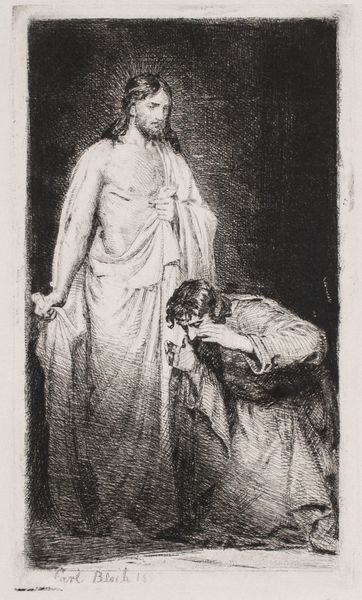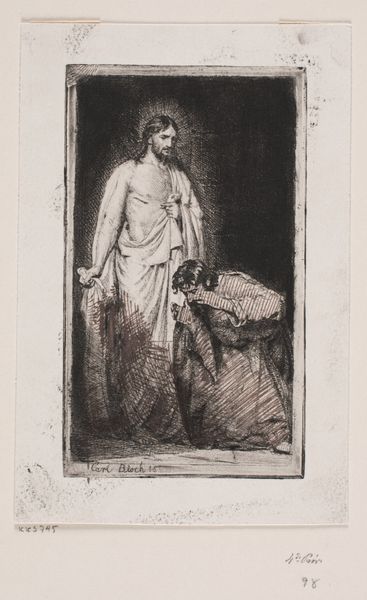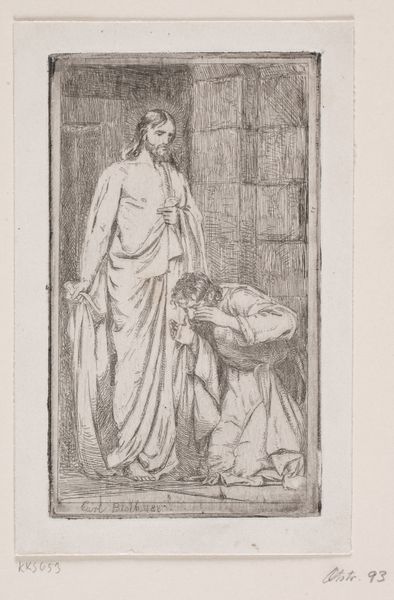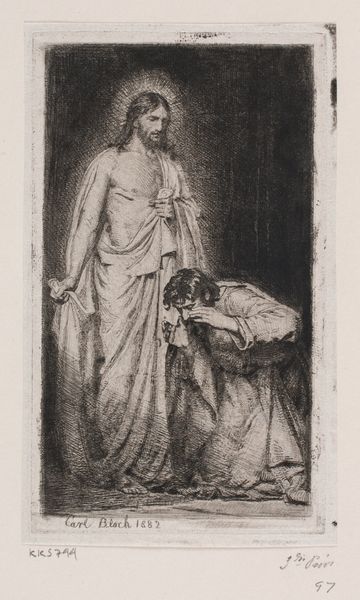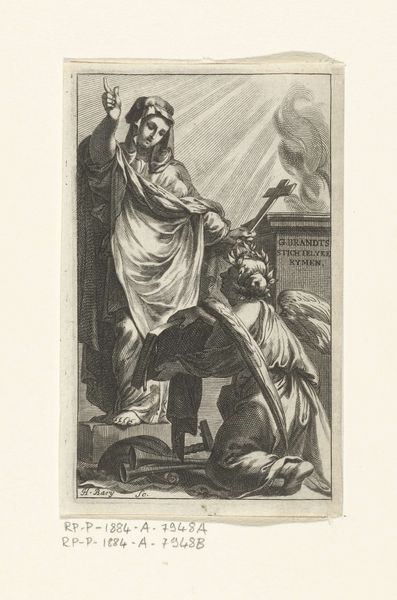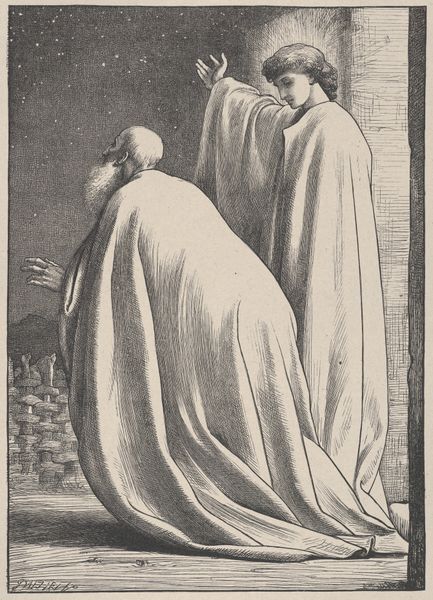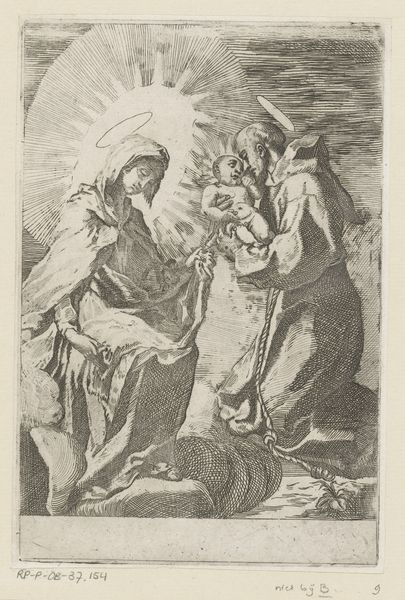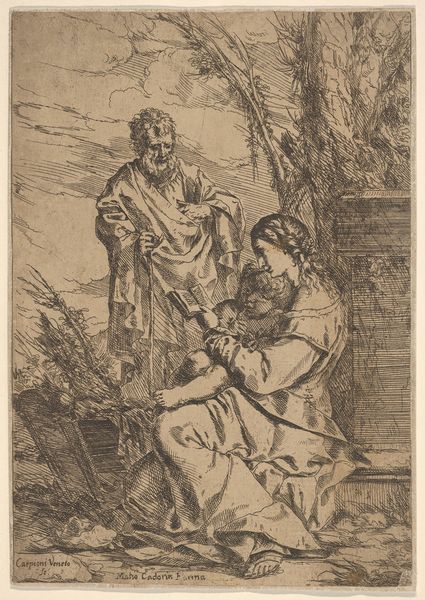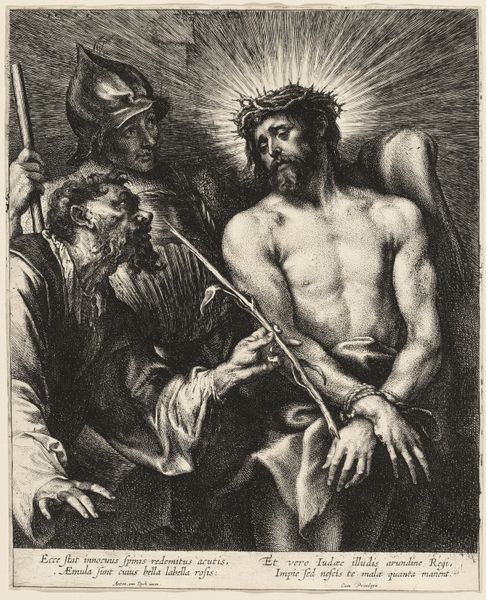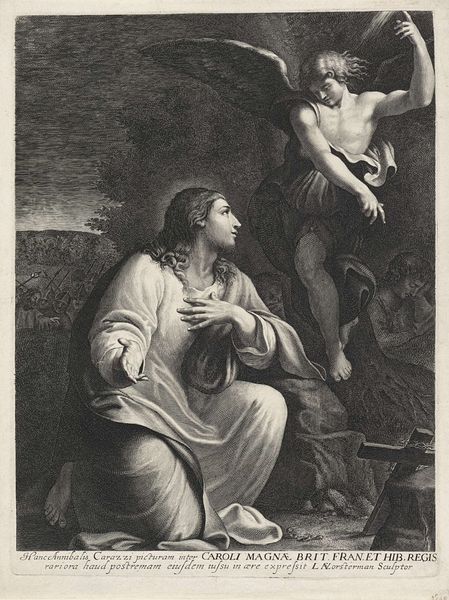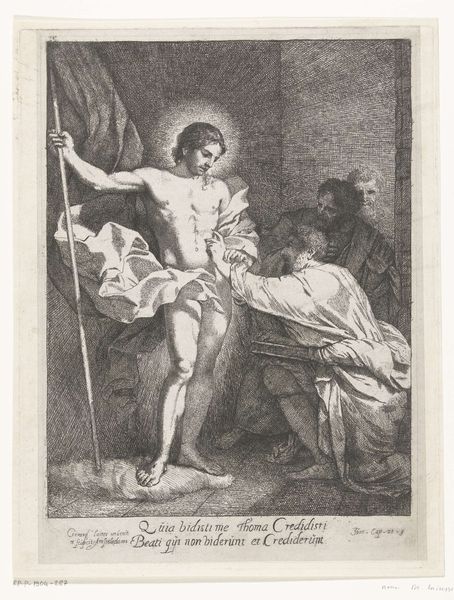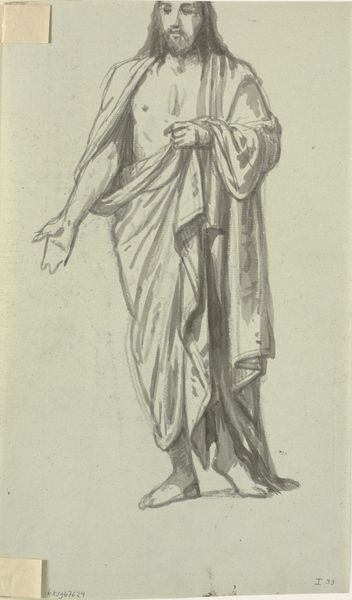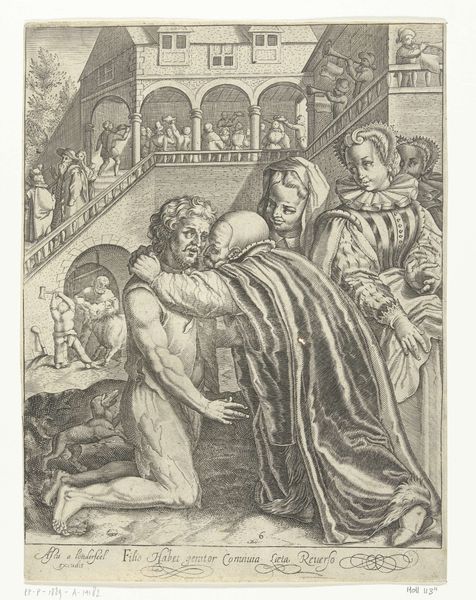
print, etching
# print
#
etching
#
figuration
#
history-painting
#
realism
Dimensions: 341 mm (height) x 240 mm (width) (bladmaal), 119 mm (height) x 70 mm (width) (plademaal)
Curator: There's a deep hush to this piece, wouldn't you say? All shadows and hesitant light. It reminds me of stumbling into a confession. Editor: This is "Christ and the Doubting Thomas," an etching created around 1885 by Carl Bloch. What stands out to you about it as an object within its historical context? Curator: It's surprisingly intimate for a historical work dealing with faith. Usually, we see these grand, operatic portrayals, but here... it feels like a stolen moment between two souls wrestling with belief. It feels like doubt made visible, then tenderness rushing to meet it. Editor: Yes, the scale contributes to that feeling; etchings such as this circulated widely, available for individual study or devotion, influencing religious perceptions beyond the Church. Bloch’s works, distributed as prints, shaped popular understandings of scripture in the late 19th century. The distribution, that's the amazing part. Curator: Exactly! Thomas is almost overwhelmed. He's kneeling, his face buried in his hands, as though the reality of what he's seeing is too much to bear. But Christ's presence—softly radiant—isn't accusatory. It's an invitation, an understanding nod. What I want to know is why? How could this one make more relatable the feelings of those doubting back then? Editor: Bloch's emphasis on realistic representation and emotional engagement departed from more didactic, allegorical depictions common previously, reflecting a shift towards a more personal experience of religion aligned with social reforms in Danish society. Also, the choice to reproduce it by etching democratized access. The availability of the print medium ensured wider circulation than could be possible via large-scale paintings or drawings. Curator: Ah, that context enriches the quiet drama here. And the shadows—the heavy, enveloping shadows—add to that sense of being hidden, private, even vulnerable. Editor: It invites questioning—doubting—as a step in believing, aligning it with a modernized understanding of the gospels that served very progressive interests. Curator: Well, regardless, the artist left an enduring question on display. The art piece made me think: 'what proof will it take for me, today?'. Editor: Right. So perhaps it’s as much about Thomas's crisis of faith as it is about the socio-political conditions under which new modes of imaging and belief found circulation. A powerful, enduring reflection.
Comments
No comments
Be the first to comment and join the conversation on the ultimate creative platform.
